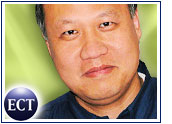
To say that Motorola has had a turbulent recent history is something of an understatement. A few years ago, when the semiconductor sector was hemorrhaging money and the handset arena was not doing too well either, the company began to reorganize, with mixed success.
As Motorola works to become a lean, efficient machine, there seems to be a long road ahead, yet within the company’s walls, optimism still runs rampant.
The E-Commerce Times talked about the future with Rob Shaddock, vice president and general manager for Motorola’s PCS unit.
E-Commerce Times: With so much recent reorganization in Motorola, what do you feel the company’s greatest strength is right now?
Rob Shaddock: We’ve been in business for 75 years, and that’s clearly one of our biggest strengths. People know us, we’re recognized by customers, and when we bring out new technology, we don’t have to keep explaining who we are. In some parts of the world, we have to build more brand recognition, but on the whole, people know Motorola.
ECT: Where do you have to build brand?
RS: One of our areas of focus is Europe. We’re getting new products out, and we’ve just revamped our team there, so that should help. We’ve gotten the regional team right, so that should move us toward becoming more well known there. We’re working closely with the major carriers and doing regular product launches. We also have some important alliances. The brand building is not going to happen overnight; it’s a long-term thing.
ECT: What kind of alliances are you developing to bolster Motorola’s name?
RS: We’ve partnered with MTV in Europe, and we think that’s going to be very important. MTV there is not like it is in the U.S., it’s much more like it was at its beginning, with music videos and fewer shows. By associating the company with fun and music, we have a great doorway into the youth culture. That demographic is a newer focus for us, and we’re trying to capture it with products like the C350 and ad spots that feature popular DJs. I couldn’t tell you who they are, though. I’m a little too old.
ECT: Besides getting up and running in Europe, what other challenges is the company facing while it is trying to streamline itself?
RS: I think simplification is definitely a big one for us. We’ve been reorganizing the way we do product development, with the goal of simplifying a number of our procedures. We’re trying to get a regular rhythm to our product development so we have a continuous flow of new products, especially in Asia.
Simplification for us is really about building platforms, which means developing technology that we build products from. Rather than trying to develop technology from soup-to-nuts, we’re working on building a platform that we can develop a range of products around. To do that, we’ve been collaborating with other divisions and looking at their technology. For example, the I250 chipset was developed by our semiconductor division, but we use it in our handsets.
This simplification has to match up with speed, however. If you start from the premise that your biggest goal is to have a steady flow of new products, then you start to organize your development process to do multigenerational design. That’s what we’ve started to do — develop a range of products in multiple iterations at once.
ECT: What will this kind of strategy give the company that it hasn’t had before?
RS: More speed to market. Simplification is the larger goal, but then you have to talk about the softer goals, like speed, and moving products faster from the drawing board to development, and margin improvement. As we simplify our processes, all of these things will happen because streamlining has such a big impact.
ECT: Why is it so important to have more products for Asia as compared to the rest of the world?
RS: In China, you have the rapid emergence of local manufacturers, or local brands, some call them. In the last six to nine months, there’s been a big build-up in inventory at these places, so that poses a big challenge to driving rapid growth for us there. We’ve been managing our inventory, but we’re seeing constant marketplace pressure to come out with more products. The market is flooded. So that has a big impact.
ECT: How will the China situation impact how Motorola does business there in the future?
RS: We expect to see some downward share adjustment. What we have to do is overcome several challenges there, including our speed-to-market time. China itself has had certain challenges lately, most especially with SARS. But now that that’s no longer preventing commerce, we’re well positioned to move pretty aggressively.















































Social Media
See all Social Media